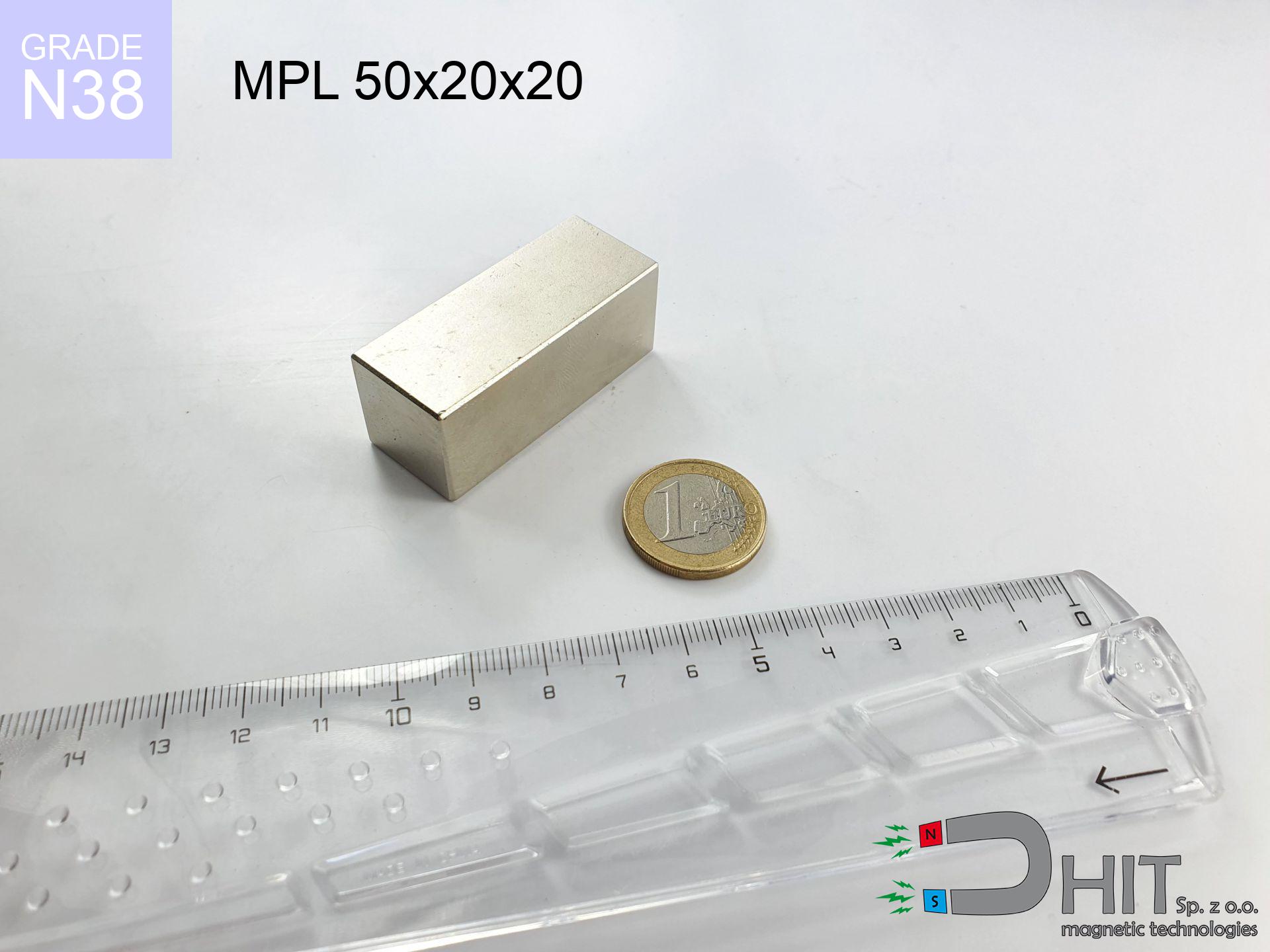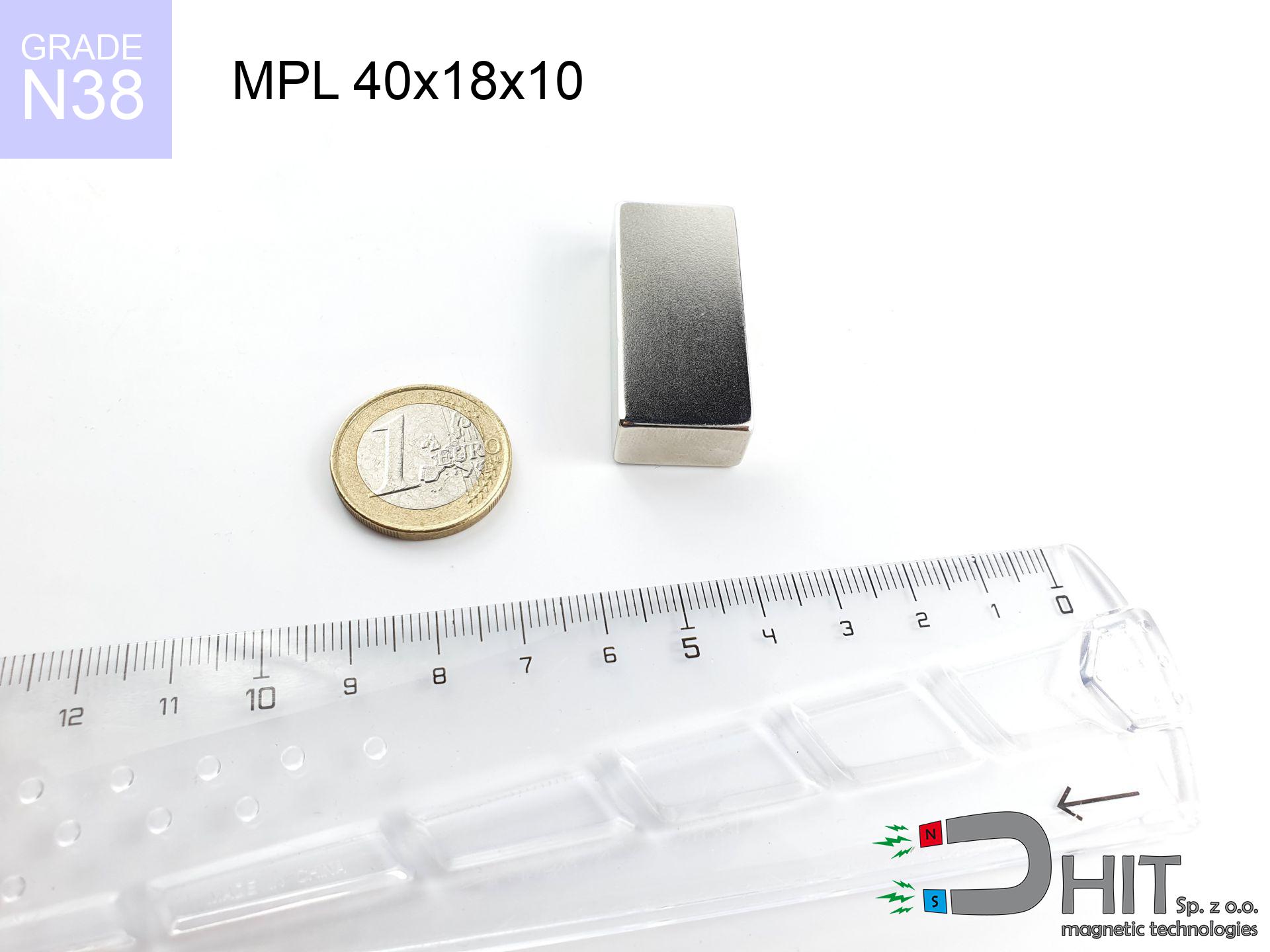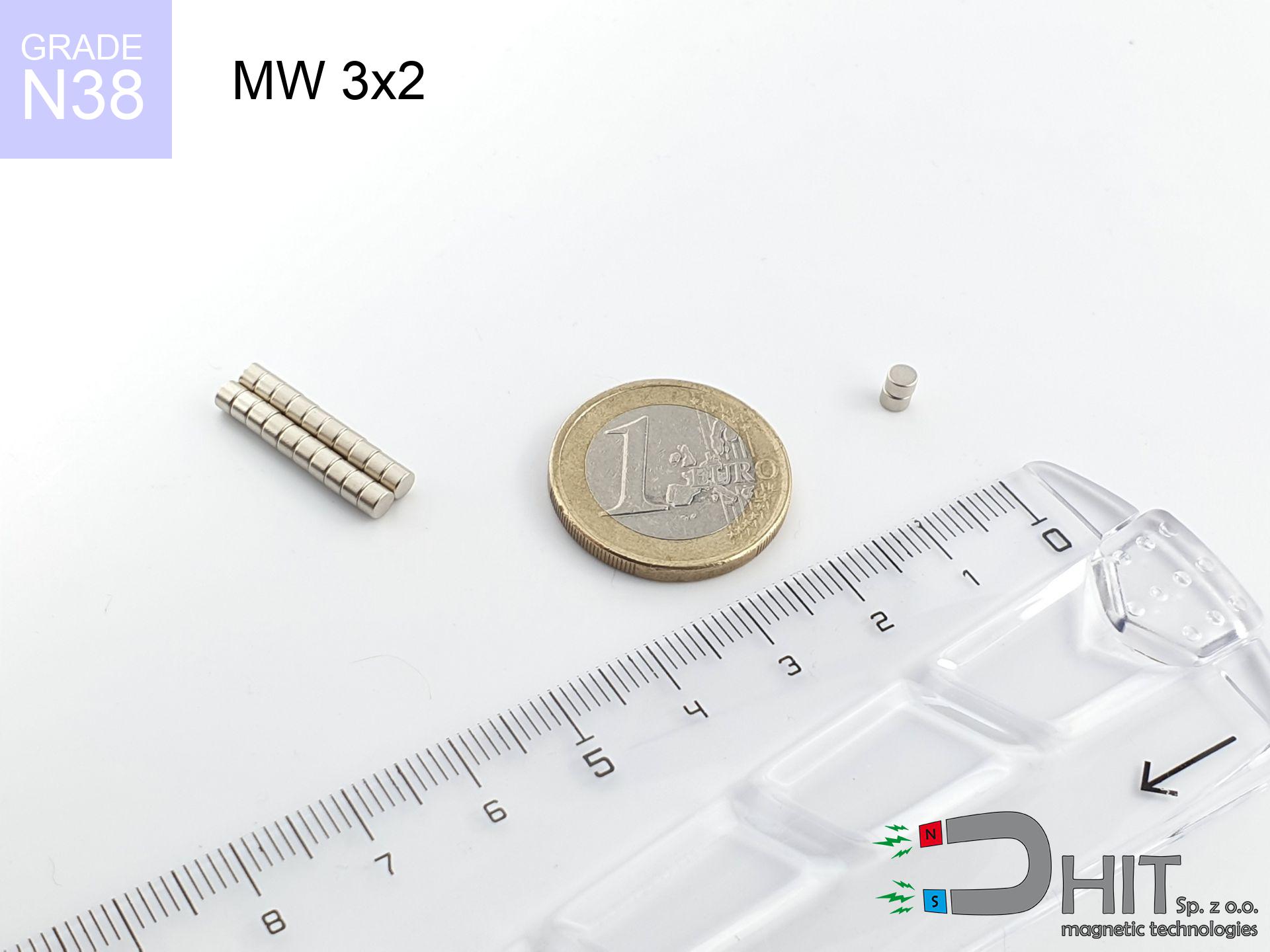SM 32x400 [2xM8] / N52 - magnetic roller
magnetic separator
catalog number 130463
GTIN: 5906301813347
diameter Ø
32
mm [±0,1 mm]
height
400
mm [±0,1 mm]
max. temperature
≤ 80
°C
catalog number 130463
GTIN: 5906301813347
diameter Ø
32 mm [±0,1 mm]
height
400 mm [±0,1 mm]
max. temperature
≤ 80 °C
1266.90 ZŁ gross price (including VAT) / pcs +
1030.00 ZŁ net price + 23% VAT / pcs
bulk discounts:
need more quantity?Don't know what to buy?
Call us tel: +48 22 499 98 98 or get in touch via form on our website. You can check the power as well as the appearance of magnet in our magnetic mass calculator magnetic calculator
Orders placed by 2:00 PM will be shipped on the same business day.
Specification: magnetic separator 32x400 [2xM8] / N52
Magnetic properties of the material N52
Physical properties of sintered neodymium magnets Nd2Fe14B
Compilation of suggested goods
Advantages as well as disadvantages of neodymium magnets NdFeB.
In addition to immense power, neodymium magnets have the following advantages:
- They do not lose power over time - after about 10 years, their strength decreases by only ~1% (theoretically),
- They protect against demagnetization caused by external magnetic field very well,
- In other words, thanks to the shiny coating of nickel, gold, or silver, the element acquires an aesthetic appearance,
- They have very high magnetic induction on the surface of the magnet,
- Thanks to their high temperature resistance, they can operate (depending on the form) even at temperatures up to 230°C and above...
- Thanks to the flexibility in shaping or the ability to adapt to specific requirements – neodymium magnets can be produced in many variants of shapes or sizes, which expands the range of their possible uses.
- Wide application in the industry of new technologies – are utilized in hard drives, electric drive mechanisms, medical devices or very advanced devices.
Disadvantages of neodymium magnets:
- They can break as they are fragile when subjected to a strong impact. If the magnets are exposed to impacts, it is suggested using magnets in a protective case. The steel housing in the form of a holder protects the magnet from impacts and simultaneously increases its overall strength,
- They lose power at high temperatures. Most neodymium magnets experience permanent loss of strength when heated above 80°C (depending on the form and height). However, we also offer special magnets with high temperature resistance, up to 230°C,
- Magnets exposed to a humid environment can corrode. Therefore, when using them outdoors, we recommend using waterproof magnets made of rubber, plastic, or other moisture-resistant materials,
- The use of a cover - a magnetic holder is recommended due to the limited production capabilities of creating threads or complex shapes in the magnet
- Possible danger associated with microscopic parts of magnets can be dangerous, if swallowed, which is crucial in the aspect of protecting young children. Furthermore, tiny parts of these devices can complicate diagnosis in case of swallowing.
Safety Precautions
Neodymium magnets can become demagnetized at high temperatures.
Under specific conditions, Neodymium magnets may experience demagnetization when subjected to high temperatures.
Under no circumstances should neodymium magnets be brought close to GPS and smartphones.
Intense magnetic fields generated by neodymium magnets interfere with compasses and magnetometers used in navigation, as well as internal compasses of smartphones and GPS devices.
Neodymium Magnets can attract to each other due to their immense internal force, causing the skin and other body parts to get pinched and resulting in significant injuries.
Magnets will attract each other within a distance of several to around 10 cm from each other. Don't put your fingers in the path of magnet attraction, as a significant injury may occur. Magnets, depending on their size, are able even cut off a finger or alternatively there can be a severe pressure or even a fracture.
Do not place neodymium magnets near a computer HDD, TV, and wallet.
Strong fields generated by neodymium magnets can damage magnetic storage media such as floppy disks, credit cards, magnetic ID cards, cassette tapes, video tapes, or other similar devices. They can also damage televisions, VCRs, computer monitors, and CRT displays. You should especially avoid placing neodymium magnets near electronic devices.
Dust and powder from neodymium magnets are flammable.
Do not attempt to drill into neodymium magnets. Mechanical processing is also not recommended. Once crushed into fine powder or dust, this material becomes highly flammable.
Neodymium magnetic are extremely fragile, leading to breaking.
Neodymium magnets are characterized by considerable fragility. Neodymium magnets are made of metal and coated with a shiny nickel surface, but they are not as hard as steel. At the moment of collision between the magnets, small metal fragments can be dispersed in different directions.
Neodymium magnets are the strongest magnets ever invented. Their strength can shock you.
Make sure to review all the information we have provided. This will help you avoid harm to your body and damage to the magnets.
People with pacemakers are advised to avoid neodymium magnets.
Neodymium magnets produce strong magnetic fields that can interfere with the operation of a heart pacemaker. Even if the magnetic field does not affect the device, it can damage its components or deactivate the entire device.
The magnet coating is made of nickel, so be cautious if you have an allergy.
Studies show a small percentage of people have allergies to certain metals, including nickel. An allergic reaction often manifests as skin redness and rash. If you have a nickel allergy, you can try wearing gloves or simply avoid direct contact with nickel-plated neodymium magnets.
It is essential to keep neodymium magnets out of reach from youngest children.
Neodymium magnets are not toys. You cannot allow them to become toys for children. Small magnets pose a serious choking hazard or can attract to each other in the intestines. In such cases, the only solution is to undergo surgery to remove the magnets, and otherwise, it can even lead to death.
So that know how strong neodymium magnets are and why they are so dangerous, read the article - Dangerous very powerful neodymium magnets.

![SM 32x400 [2xM8] / N52 - magnetic roller SM 32x400 [2xM8] / N52 - magnetic roller](https://cdn3.dhit.pl/graphics/products/sm-32x400-2xm8-led.jpg)
![magnetic separator 25x250 [2xM8] / N52 magnetic separator 25x250 [2xM8] / N52](https://cdn3.dhit.pl/graphics/products/sm-25x250-2xm8-sam.jpg)




